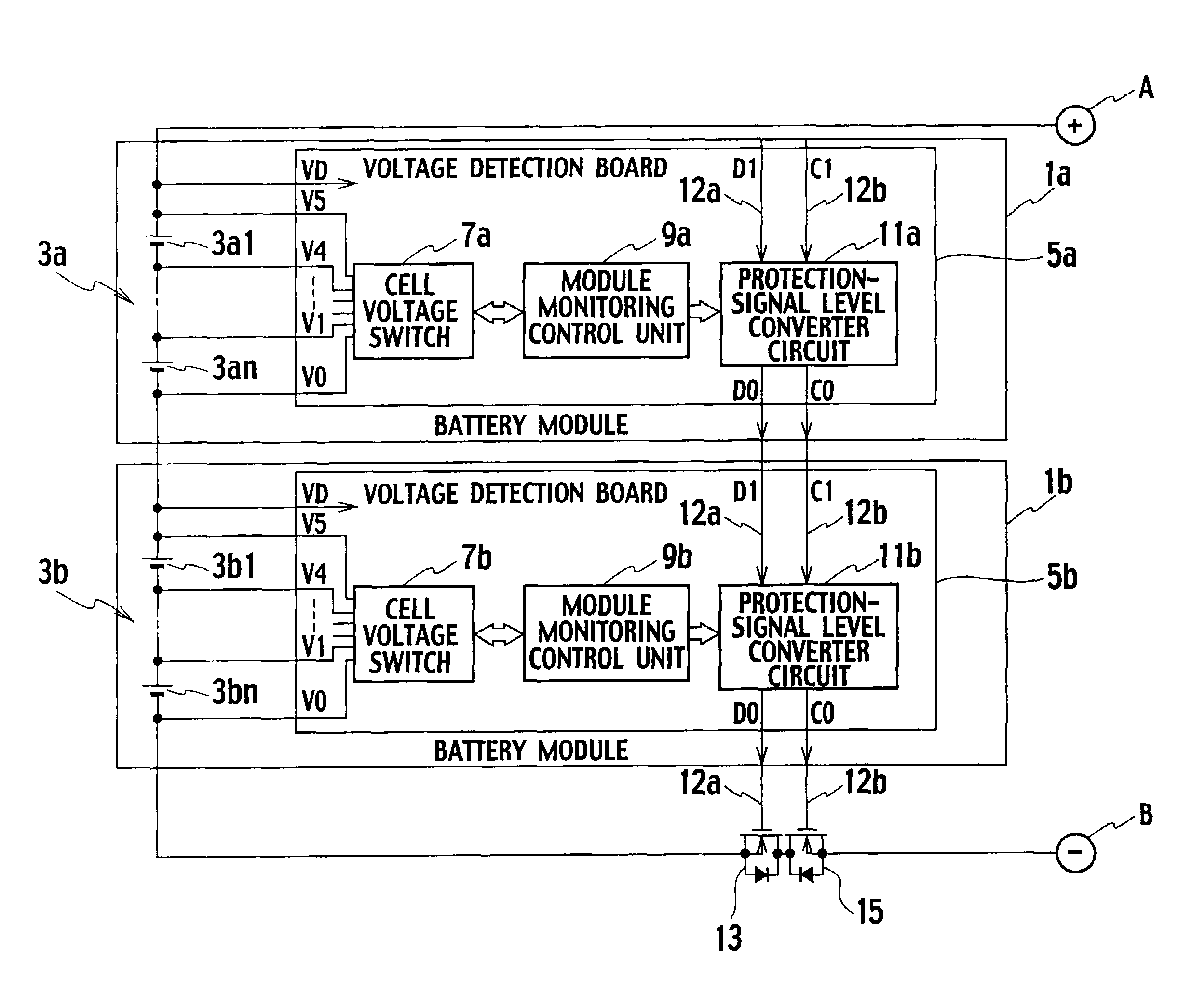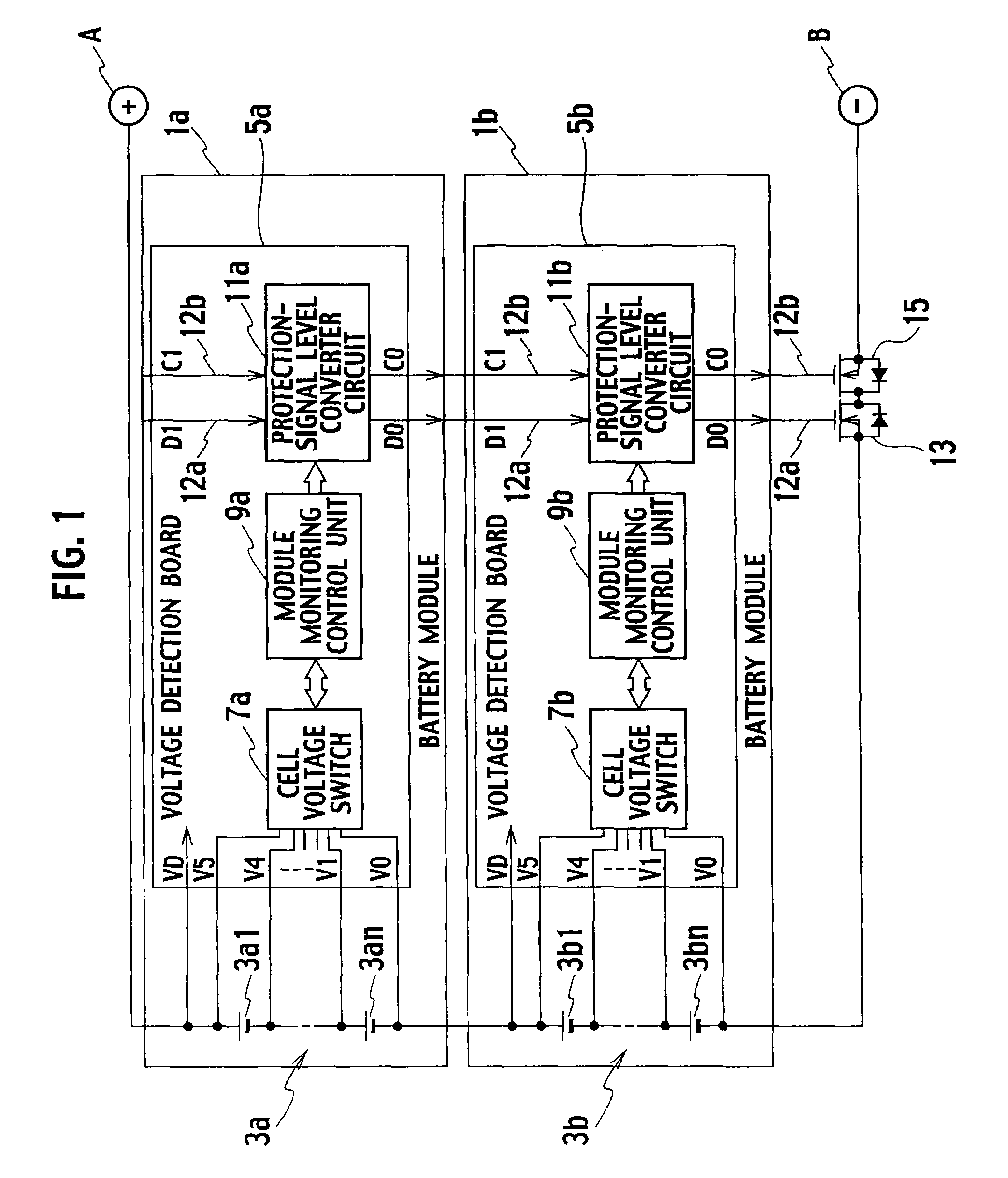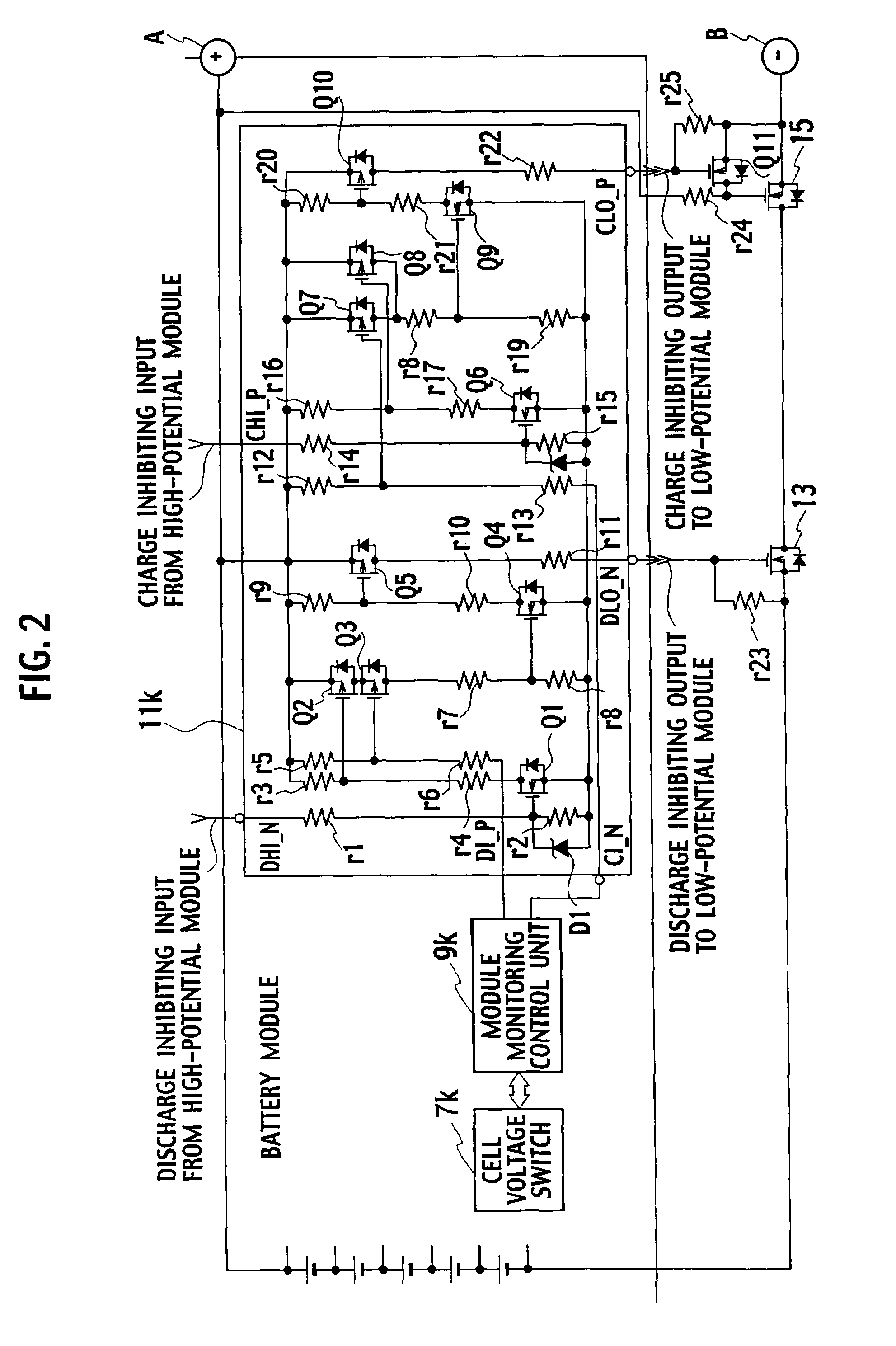Battery module
a battery module and battery technology, applied in the field of battery systems, can solve the problems of affecting the difficulty of monitoring the voltage of the battery module under the overall high voltage of the main battery, and the increase of the cos
- Summary
- Abstract
- Description
- Claims
- Application Information
AI Technical Summary
Benefits of technology
Problems solved by technology
Method used
Image
Examples
embodiment 1
(Embodiment 1)
[0029]FIG. 1 is a block diagram of a configuration of a battery system according to Embodiment 1 of the present invention. The battery system shown in FIG. 1 is used, for example, as a battery for electric automobiles and the like, and is configured by connecting a battery module 1a to a battery module 1b in series. It should be noted that the battery system may be configured by connecting three or more battery modules in series.
[0030]Power from a generator (not illustrated) or regenerated power from a motor (not illustrated) is designed to be supplied between a + terminal A of the battery module 1a and a − terminal B of the battery module 1b, so that the battery modules 1a and 1b are charged. In addition, the battery modules 1a and 1b are designed to discharge by a drive of the motor.
[0031]The battery modules 1a and 1b respectively include: plural single cells 3a1 to 3an and 3b1 to 3bn connected to one another in series; cell voltage switches 7a and 7b; module monitor...
embodiment 2
(Embodiment 2)
[0046]A battery system shown in FIG. 3 includes temperature detections 21a and 21b, such as thermistors, as temperature detection units for detecting the temperatures of the plural single cells in battery modules 1a-1 and 1b-1, respectively, in addition to the configuration of the battery system according to Embodiment 1 shown in FIG. 1.
[0047]Moreover, based on information on the temperatures detected by the temperature detections 21a and 21b, module monitoring control units 9a-1 and 9b-1 output an overdischarge inhibiting protection signal and an overcharge inhibiting protection signal to the protection-signal level converter circuits 11a and 11b when the temperatures become equal to, or higher than the corresponding predetermined temperatures, respectively.
[0048]The protection-signal level converter circuit 11b outputs the overdischarge inhibiting protection signal to the discharge inhibiting switch 13, and the overcharge inhibiting protection signal to the charge in...
embodiment 3
(Embodiment 3)
[0051]FIG. 4 is a block diagram of a configuration of a battery system according to Embodiment 3 of the present invention. The battery system according to Embodiment 3 shown in FIG. 4 is characterized in that battery modules 1a-2 and 1b-2 further include discharge inhibiting switches 23a and 23b, which are connected to plural single cells 3a1 to 3an and 3b1 to 3bn, and which inhibit the plural single cells 3a1 to 3an and 3b1 to 3bn from discharging while the battery modules 1a-2 and 1b-2 are assembled with each other, respectively, in addition to the configuration of the battery system according to Embodiment 1 shown in FIG. 1.
[0052]A protection-signal level converter circuit 11b-2 outputs a discharge inhibition releasing signal, which has come from a discharge inhibition releasing switch S1, to a protection-signal level converter circuit 11a-2 and the discharge inhibiting switch 23a in the battery module 1a-2.
[0053]Based on the discharge inhibition releasing signal fr...
PUM
 Login to View More
Login to View More Abstract
Description
Claims
Application Information
 Login to View More
Login to View More - R&D
- Intellectual Property
- Life Sciences
- Materials
- Tech Scout
- Unparalleled Data Quality
- Higher Quality Content
- 60% Fewer Hallucinations
Browse by: Latest US Patents, China's latest patents, Technical Efficacy Thesaurus, Application Domain, Technology Topic, Popular Technical Reports.
© 2025 PatSnap. All rights reserved.Legal|Privacy policy|Modern Slavery Act Transparency Statement|Sitemap|About US| Contact US: help@patsnap.com



